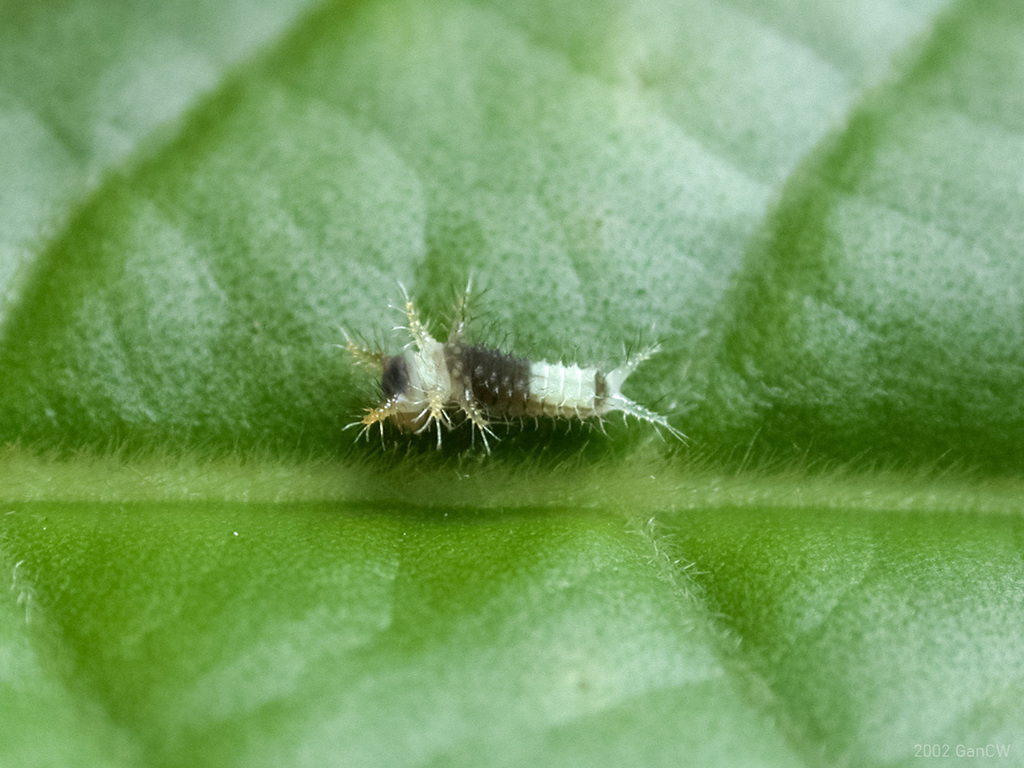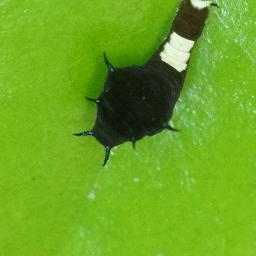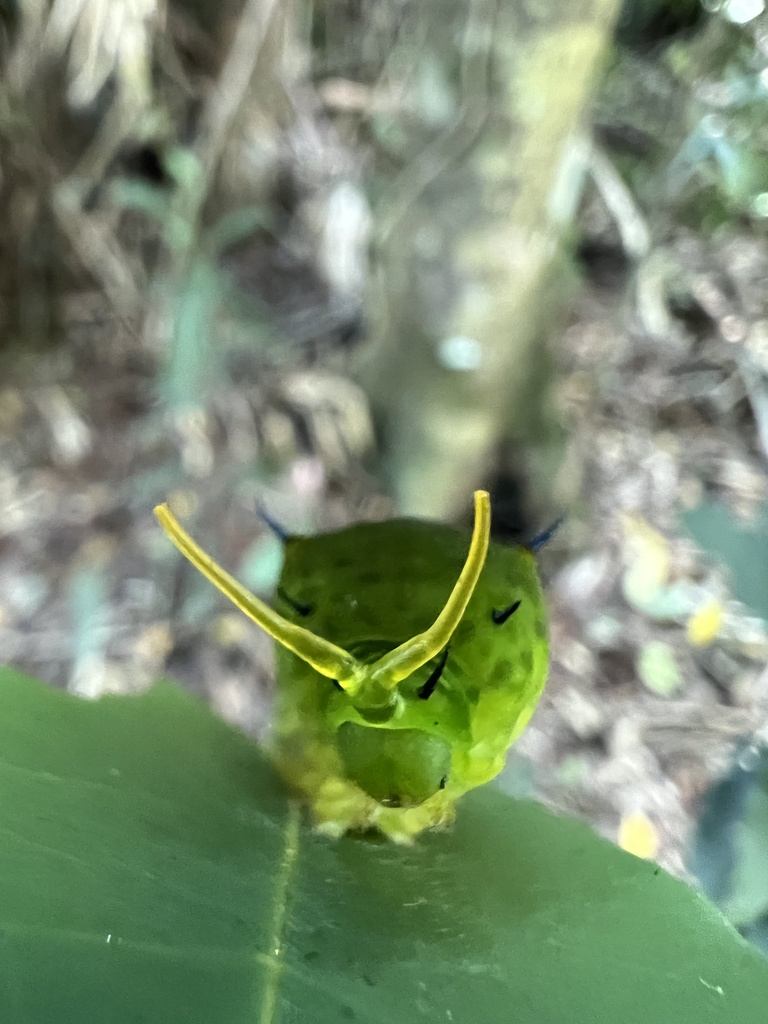In Greek literature, Agamemnon was a hero, of sorts, but a tragic one. He went to his brother's aid in war, fought well, then went home and was murdered, anyway, because he was a descendant of Atreus, who had done about half of the things the ancient Greeks thought were abhorrent to the gods and likely to call down a curse on the whole family of anyone who did them. Atreus was the brother and rival-in-evildoing of Thyestes. Between them they were supposed to have committed most if not all of the unpardonable sins. It is a great mistake to imagine that the original Pagans were less judgmental than the Jews or Christians. They were more so. Christians were the ones who brought in shocking, heretical ideas such as that a man who had killed a member of his family, by accident, might be forgivable.
But Agamemnon has generally been read as a man with at least some good qualities, and his name has been given to various animal species, including a moth and a butterfly. The butterfly is sometimes called the Tailed Jay, or Green-Spotted Triangle, or sometimes the Tailed Triangle or Green-Spotted Jay. I don't see much resemblance to a jaybird but I can see how it got the name "Green-Spotted Triangle."
Photo by Peellden. Pale stripes and spots iridesce from mint green to apple green, or can look white, depending on the light. On females the dark background is more likely to look brown rather than black or dark gray, and on both sexes the underside may resemble the upper side or be patched in shades of brown with a few pale spots. Photographs of couples show that males and females often look almost alike, with minor variations in the arrangements of spots and stripes. Wingspan is 6 to 7 cm, 2 to 3 inches.
Photo by Praveenlbennur. The living butterfly can display its wings in the standard parallelogram shape, but you have to scroll through lots of photos of agamemnon in triangular poses to find one with the parallelogram pose.
Photo by La Petite Ferme, showing an individual whose upper and under sides match almost perfectly, photographed in Queensland, Australia.
Photo by Pranavgopalamrk, showing an individual whose under sides show a different pattern from its upper sides, photographed in Chennai, Tamil Nadu, India.
Photo by Reachdreams, showing that these different patterns can occur in the same place and subspecies. Couples mating back to back are relatively likely to hold still and be photographable. This unmatched pair probably assumed a nice symmetrical back-to-back position shortly before or after this lucky action shot was snapped. Photos of matched pairs outnumber photos of unmatched pairs at all the butterfly photo sites.
This species has been called a few different names in Latin, too, The older school of naturalists classified all Swallowtails as one genus, Papilio. Some people feel that the genus Graphium is still overcrowded, and have reclassified agamemnon in the genus Zetides. The species has also been called mynion, not very often.
The green color is sometimes described as "electric" or "electrifying." Undoubtedly startling to people seeing it for the first time, it has generated some online discussion of possible "meanings" for this species and other iridescent green and black butterflies.
"What is the meaning of a green butterfly in the Bible?:
"The butterfly is a symbol of rebirth..."
Because a pupating butterfly really does seem to be dying, decomposing, and returning to life in a different form, rebirth and transformation are things butterflies symbolize for us. The ancient Hebrews were not butterfly fanciers, however. The Bible doesn't make it clear that they realized that butterflies and caterpillars are the same animals, The Bible mentions caterpillars as destructive pests on farms and butterflies as unclean animals not to be eaten. No Bible writer seems to think of them as having other meanings than those. Seeds that turn into plants were the metaphor for rebirth and transformation in the Bible.
However, people read dozens of different meanings into the experience of noticing a green butterfly. If butterflies symbolize rebirth and green symbolizes springtime, a green butterfly might mean that faith or love will be renewed, or your present circumstances may be helping you through a process of spiritual transformation.. If green is the color of the heart chakra, it might mean that a loved one is thinking of you, or that you should trust your feelings about something, or that it's time to add people to your circle---get married, have a baby, make new friends. Or your health or finances may be about to improve. Green butterflies are rare, more so in some places than in others, and are sometimes painted on the walls of nursing and rehabilitative care centers as symbols of encouragement. They can be seen as messengers of hope for renewal of relationships, too.
A few of the "spiritual meaning" seekers recognize the different shadings and species of butterflies that can be called green, or green and black, or black that iridesces green. North America's green butterflies, the little pastel-colored Green Hairstreak, the black-iridescing-to-green Swallowtails, and the pale green or white Zebra Swallowtail, certainly look different from this gaudy tropical Triangle or the enormous Birdwings.
By folding several copies of a photo of this butterfly into triangles of light-filtering epoxy, Lauri R. Dunn-Peterson obtained a unique piece of abstract art:
Graphium agamemnon is known and loved throughout southern Asia, found in Australia, Bali, Borneo, Cambodia, China, India, Java, Laos, Malaysia, Myanmar/Burma, Nepal, Palawan, the Philippines, Singapore, Sumatra, Taiwan, Thailand, and Vietnam.
Some sites list up to twenty subspecies but I found no thorough explanation of the distinctions among them. The closest thing I found to a description of the subspecies was a page with photos of five subspecies found in India:
Naturalists with strange senses of humor named two subspecies atreus and aegisthus, Aegisthus being the trusted cousin who, with help from other family members, killed Agamemnon. (The idea was that Aegisthus would marry his cousin's widow and inherit his property--and his throne, Agamemnon being one of those kings of cities in ancient Greece.) Linnaeus, in fact, accepted aegisthus as a similar but distinct species; later scientists classified it as a subspecies.
Of course a butterfly as widely known and loved as this one has been portrayed on postage. There was a Cambodian stamp with a less lifelike rendition of Graphium agamemnon, too.
Because the butterflies are so pretty and distinctive-looking, and are not endangered, it's possible (at least in suitable countries) to buy eggs or pupae and rear these butterflies. Anyone can wait for a butterfly to eclose from a pupa. Rearing these butterflies from eggs, sellers warn, takes some preparation: you want to have host plants established, at least two years old.
Rearing butterflies is not always successful. A commenter at one blog, where the main content described a successful rearing project, said that only "a long yellow worm" came out of the commenter's butterfly's pupa, and no butterfly. Parasitism is common in the insect world, especially when a species is "common." The blogger known as Theertha found two eggs that hatched into two caterpillars, presumably siblings.
Though each caterpillar tidily ate its own eggshell, this is one of the Swallowtails that come closer to showing vestiges of survival intelligence; they gnawed companionably away at different sides of one leaf, never nibbling on each other's skins. Nevertheless, one caterpillar matured quickly while the other lagged behind. The slower grower eventually pupated, but died in its pupal shell, its abdominal section eaten away. Theertha and classmates were then given some more eggs by their teacher ("Arunan sir sir") and reared another butterfly, but on eclosion its wings failed to expand completely, and it never was able to fly. In the US several of the conditions that cause human-reared butterflies not to mature successfully have been named and scientifically diagnoses, but still very little is known about how to prevent them.
Priyanka Kumar has documented the life cycle of this species, with a few photos, at
It seems to be active for most or all of the year in some part of its range or other, but is most often seen in March. There can be seven or eight generations in a year. Both sexes pollinate flowers. Males spend some time hanging out and drinking water together, but not as much as some other Swallowtails; they're more often seen pollinating flowers. Females spend more of their time looking for places to lay eggs, making themselves harder to see, though they're not especially wary of humans either. This species likes "lower elevations" of less than 1300 meters (4265 feet). It's adjusted well to contact with humans, often living near ponds, on road verges, in hedges, in fallow fields, in suburbs and even in cities where any of its food plants grows.
This is a short-tailed species, though females tend to have longer tails than males. Sometimes the tails aren't even conspicuous as deeper than the other scallops around the edges of the hind wings. They recognize each other more by scent than by sight; for some photos of couples it's possible to identify one butterfly with less color contrast, bigger wings generally, and longer tails, and for others it's not.
Photo by Elizabeth_Byers. These Triangles seem not only to tolerate one another's company, but to prefer each other's company to the company of the Swordtails at the right side of the picture. The amount and arrangement of spots on the underside of the wings varies. Underwings can look as spotty as upper wings, or can be patches of pale and medium brown spattered with green-white; sites like INaturalist or https://bie.ala.org.au/species/https://biodiversity.org.au/afd/taxa/c923f0e9-55d5-435f-91f0-f433d2ae2bf8#gallery show the range of possibilities.
Adult butterflies are known for their "high-energy" flight. Snapping good photos of living butterflies can be a challenge as they tend to fan their wings even while eating and drinking. The butterflies also tend to spend some time each day resting, especially on rainy days, on thin branches of trees about six feet above the ground. Resting on the upper side of a leaf with its head upward puts the butterfly at a faorable angle to heavy rainfall. Resting in groups allows all the butterflies to fly up, awakening one another and confusing predators, if they are disturbed.
Photo by Plaintiger. Eggs are laid by ones but can be laid on adjacent leaves--new ones will probably have grown by the time the caterpillars have eaten the first ones. White at first, darkening to yellow as the caterpillars prepare to hatch, eggs hatch in three to four days. This is one of a minority of butterfly species in which it's possible that one or both parents may actually see their offspring, but butterflies and caterpillars seem uninterested in each other.
Photo by Gancw1. The hatchling''s bristles look big because the rest of the caterpillar is so small.
Caterpillars eat their way through five skins, each bigger than the one before, in two to three weeks. They eat their own discarded skins. They gradually change from pale grey, cream, or whitish to blackish to green, always keeping that humpbacked Swallowtail body shape. A photo essay with pictures of each instar (the time the caterpillar spends in each of its skins) is available at
Photo by Tim. The caterpillar has four pairs of bristles. Though not venomous, it tries to make itself disagreeable to predators.
Photo by Fieldnotesfromthefarnorth, showing the osmeterium in the fifth instar (the last caterpillar skin). So far as scientists have been able to determine, all Swallowtail caterpillars have osmeteria, bits of erectile tissue shaped like a snake's forked tongue. Humans don't recognize all the distinct scents by which moths and butterflies recognize one another, but usually can smell a Swallowtail caterpillar's osmeterium. It may smell sweet and fruity, or overripe and yucky. It seems easy to photograph these caterpillars without stressing them so much that they display their osmeteria.
According to Naresh Chaturvedi, in India, caterpillars can eat several different food plants, including soursop and cinnamon, Plants it eats have a distinct scent and so has the animal. A detailed list of plants it's known to eat in Australia is found at:
It is never considered a pest.
Photo by Aither. The messy labyrinth of scars this caterpillar leaves on its chosen leaf add to its camouflage effect--"Something already ate me and it was very sorry." As it grows bigger, the caterpillar will gnaw holes all the way through the leaf. However, the Swallowtails all seem to exist in a good balance with their host plants. Trees can spare the leaves they eat and they pay for what they've taken, as adult butterflies, by pollinating the trees.
Photo by Poonpoon. With its few small bristles, this final-stage caterpillar has the basic "I might be something that eats birds or mice" camouflage look.
Photo by Bikinitrip. Some pupae have elaborate eyeball-like effects on the sides, too. Most seem just to try to look boring, like dying leaves.
Pupation lasts about two weeks. A time-lapse video documents how the odd, cone-shaped caterpillar morphs into an irregular cone-shaped pupa, then into a butterfly.



















No comments:
Post a Comment